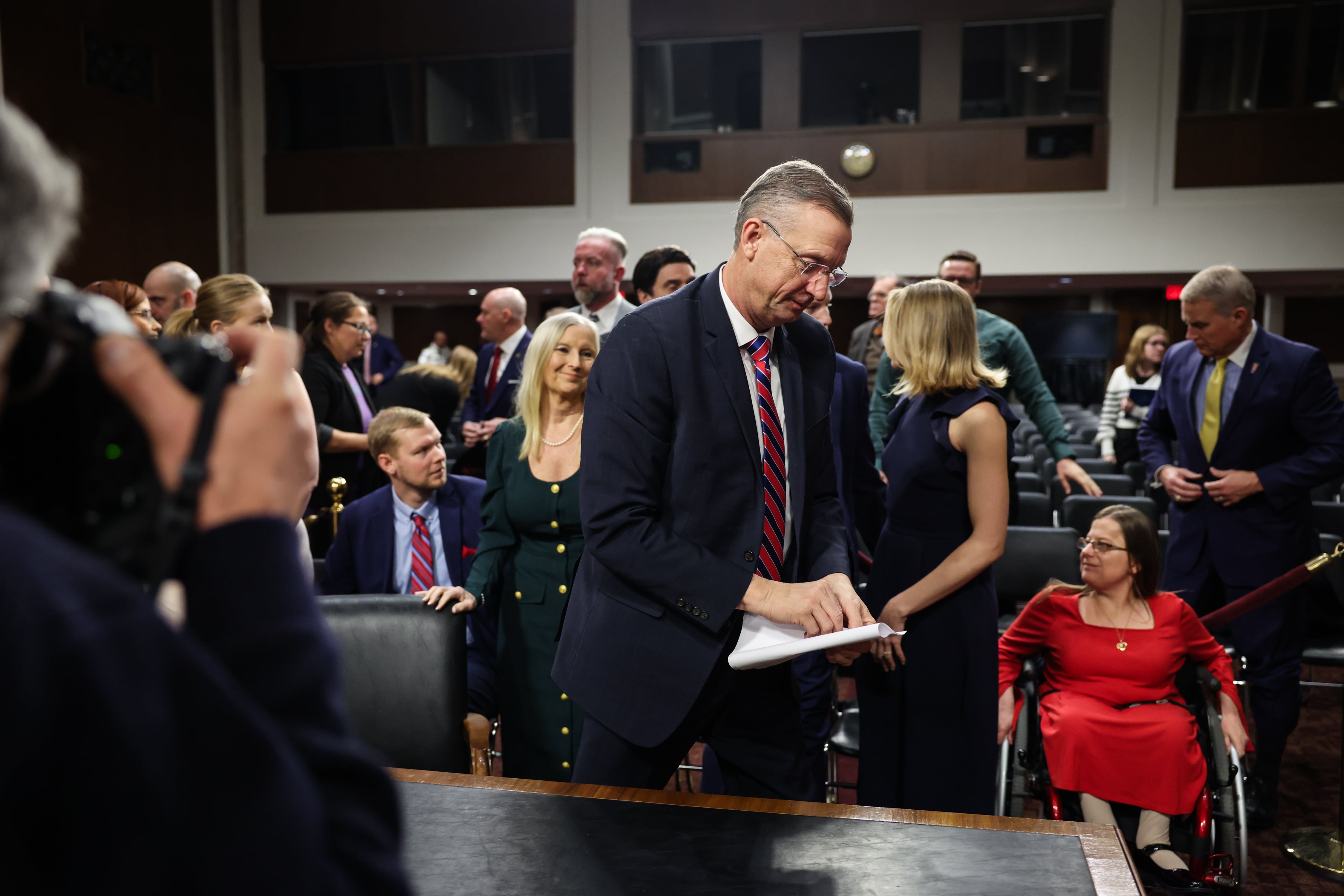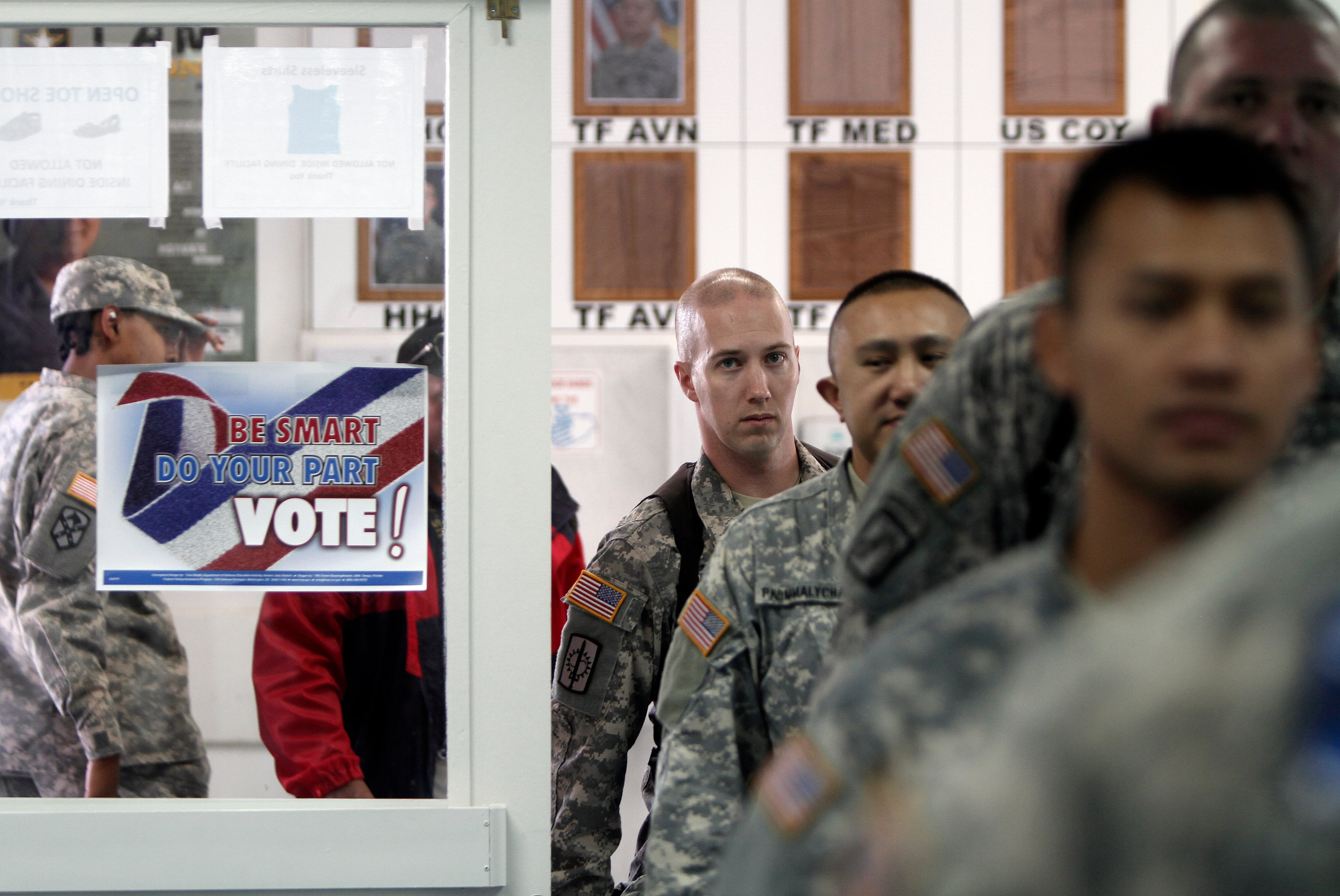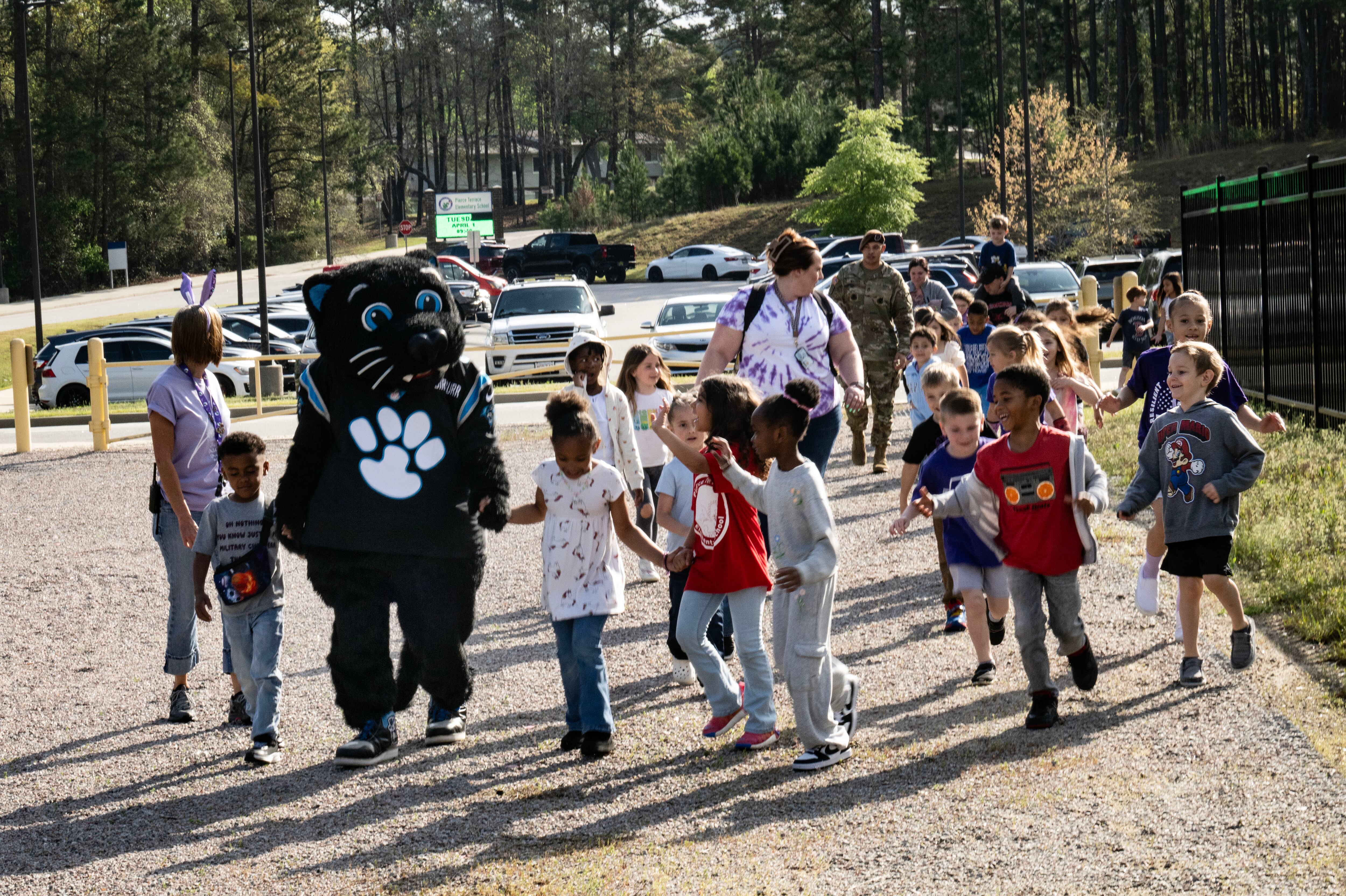It was around 3 a.m. on Dec. 1 when Air Force Tech. Sgt. Joseph Cappel, a firefighter stationed at Malmstrom Air Force Base in Great Falls, Montana, got the call about a fire raging in the area.
Cappel and the rest of his fire crew got out of bed and raced to the station.
“We really didn’t know the extent of the fire at the time, we just knew there was one and that we had to go,” Cappel told Military Times. “So, we’re on the truck and we’re listening to the radio and it’s sounding pretty chaotic. So, we’re like ‘Okay, this may be more than what we thought, a little bit bigger than what we normally go on.’”
Working that morning as the fire officer for Engine Five, Cappel and his crew — Senior Airman Sean Durand and Airmen 1st Class Randy Lopez and Quinn Parker — could see what they thought were the city lights in the distance as they drove toward the fire. But as they passed the hospital located on the outskirts of town, they realized the light they were seeing wasn’t from the community; It was from the fire.
“It looked like a lake of fire,” he said.
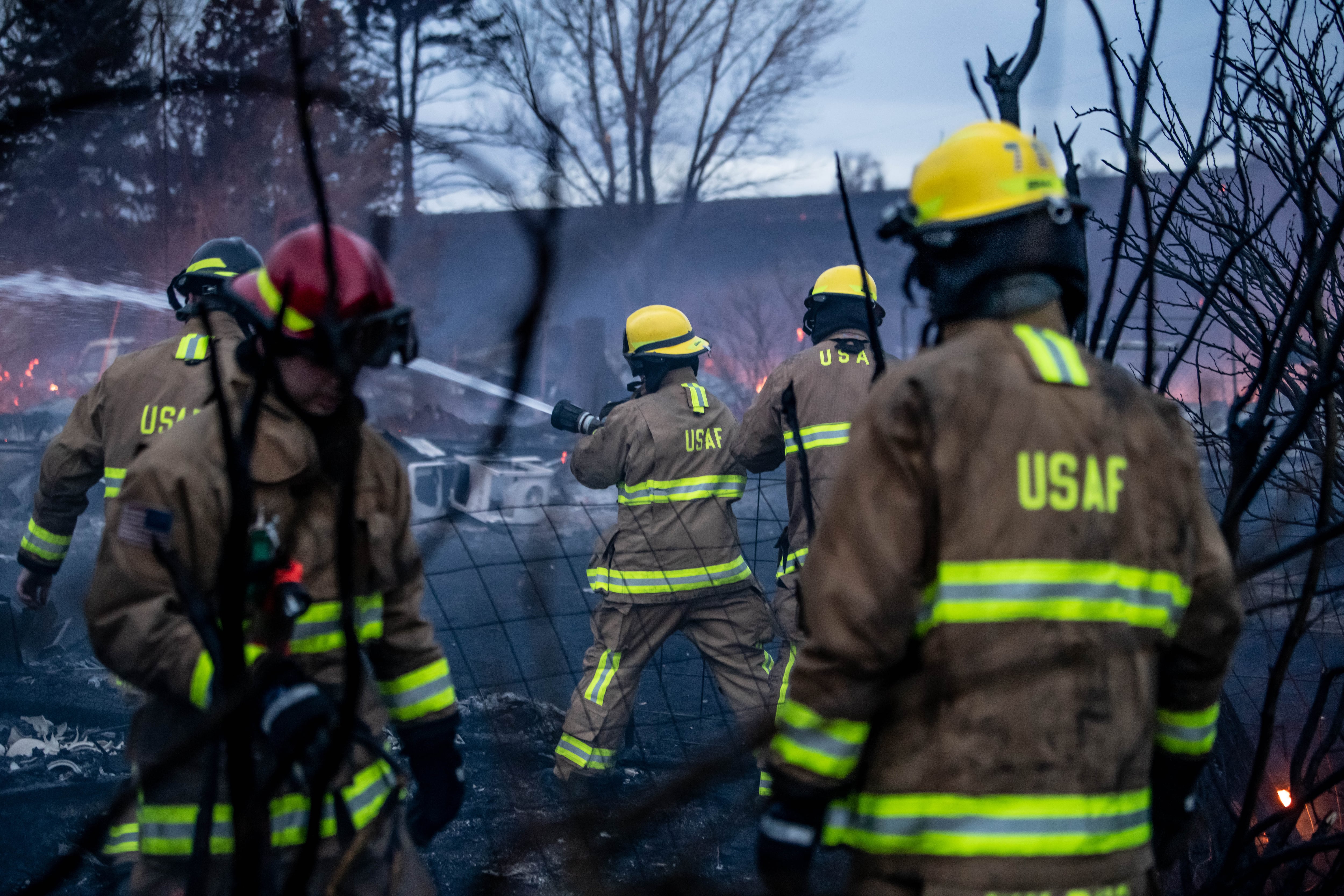
Upon arriving at the command center, the team of airmen was assigned a property to protect and told that under no circumstances could the fire jump the street. Failure to contain it there, they were told, would allow the fire to reach the hospital, and to the city just beyond.
The team immediately began work on putting out a vehicle fire on the property, but were forced to back off when it exploded.
They called the city for more water, but as they were waiting for those additional 5,000 gallons the wind turned and a fireball blew through the area in which they had just been standing.
“That vehicle exploding saved our lives,” Cappel said. “Without that divine intervention, that could have been me and my whole crew.”
Despite the close call, the airmen held their line and kept fighting the fire.
They managed to save the house they were assigned after putting out fires underneath the structure, on its deck and in the master bedroom. They also saved a truck and Ford Mustang near the home.
While keeping the property from catching fire and stopping the blaze from jumping the street may have seemed arduous enough, the crew also noticed purple and blue flames nearby, indicating arsenic or potentially lithium, both of which would be toxic to the firefighters.
“But it might as well have been the Alamo,” Cappel said. “We just put a line in the sand and said we wouldn’t push it anymore, just hold.”
When they had arrived on scene, Cappel’s team couldn’t see the extent of the damage because it had been nighttime; all they could see was the fire. But by the time light broke five hours later and a second team from Malmstrom arrived to relieve them, it looked like Armageddon.
“Houses were down, vehicles had and were exploding, and you could hear what sounded like shots being fired because there had been ammo cans, it was crazy,” Cappel said. “At one point there was a white pillar of light that shot out of the ground, that’s what it looked like, but it was an underground propane can that was on fire.
“It almost seemed like biblical proportions sometimes,” he said, “that’s how hard-core it was with all of the different colored flames and fire coming out of the ground and just being everywhere.”
It took seven more hours to put the fire out, but the Malmstrom firefighters continued their mission of holding the line.
Tech. Sgt. Nathaniel Bacorn, who was part of the second Air Force crew, said that hearing about the fire and knowing what was happening in the community, had caught everyone’s attention.
“We had guys that were off duty come in without questions, without hesitation, to help prevent the tragedy that was going on in the community,” he said.
“Even though at that point we were just there to stop the spread, it was surreal. We are part of the community and we want to be there to help, and seeing the amount of loss that was taking place was surreal. We wanted to do as much as we could, and we just tried to contribute the most that we could.”
Airmen 1st Class Logan Sims, who’s been in the Air Force for less than a year, said “there’s no way to really prepare” for such a massive blaze. “You talk about it, you train for it, but you don’t expect to do it and then, out of nowhere, it’s 5 in the morning and you’re doing it.
“I wasn’t scared though, I had full trust in everyone I was with,” Sims said. “They had my back and I had theirs.”
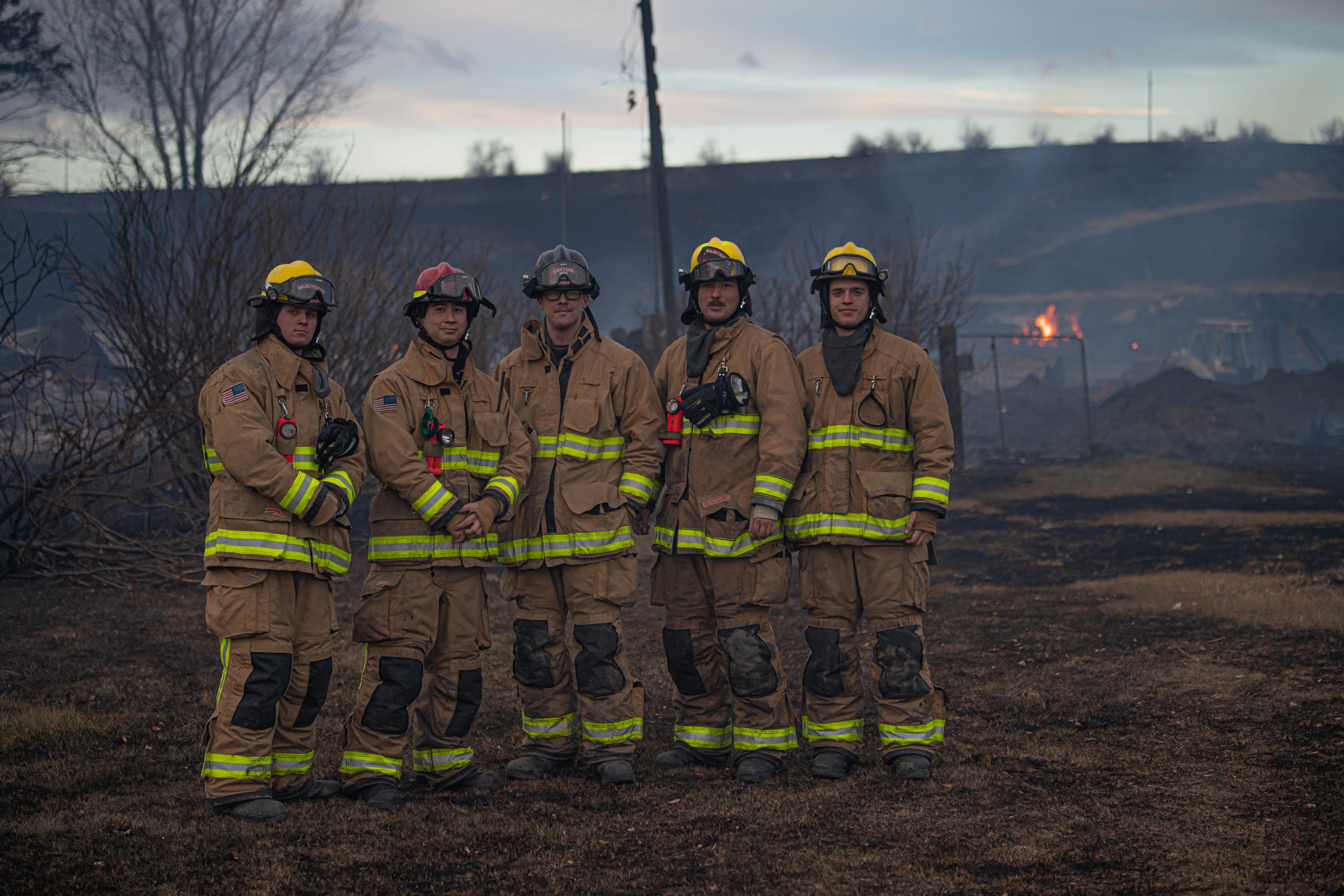
By Wednesday afternoon, more than 65 people had been evacuated and 11 homes, seven garages and 11 outhouses were destroyed, according to local reports.
More than 100 firefighters responded to the fire, which investigators now believe to have been caused by a dangerous combination of up to 56 mile-per-hour winds and downed power lines, interim Fire Chief Vern Hubka said. Malmstrom Air Force Base sent 87 percent of its firefighting personnel, with 35 airmen responding.
Lt. Col. Kirk Greene, commander of the base’s Civil Engineer Squadron and its fire marshal, said that while this fire was the most devastating Great Falls has seen in recent memory, it’s just part of the job.
“We’ve had 294 total emergencies since the beginning of the calendar year,” he said. “This is just part of our daily routine.”
Greene noted that his airmen have been called out for hazardous materials, wildland fires, search and rescue missions, ice rescues and urban firefighting.
The base has almost 50 different memorandums of agreement with local fire stations to handle these situations. These agreements aid in community development and integration, and account not only for the successful handling of this latest fire but the 20 other emergencies the Air Force firefighters have been called to off base this year alone.
They also exemplify the branch’s stance on service and leadership, he said.
“In the military we talk about intent-based leadership, and the fire station is probably among the best to demonstrate on a daily basis,” Greene said. “They come in with excitement and confidence and motivation, and they are empowered to execute on the lowest level — they have to, given the nature of their job.”
“For a lot of these guys it was their first fire, and one that they may never see the likes of again but they were all ready to go, confident in their skills and they molded very well with the local firemen,” Hubka said.
“I’m extremely proud of how they reacted.”
Rachel is a Marine Corps veteran and a master's candidate at New York University's Business & Economic Reporting program.


